Coloring books have long held a special place in the hearts of children around the world. These simple yet captivating pages filled with outlines and spaces waiting to be filled with color offer an enchanting escape from reality. It’s not just about the act of coloring itself; it’s about creativity, expression, and development that takes place during these colorful adventures. Every stroke of the crayon or splash of paint represents more than just color on paper; it signifies a child’s unique perspective and emotional state, transforming a blank page into a canvas for their budding imagination.
In a world filled with digital distractions, coloring books provide a tangible and interactive experience that fosters engagement, providing crucial developmental benefits. This article will delve into the various reasons children are drawn to coloring books from their appealing designs to the social and emotional benefits they impart.
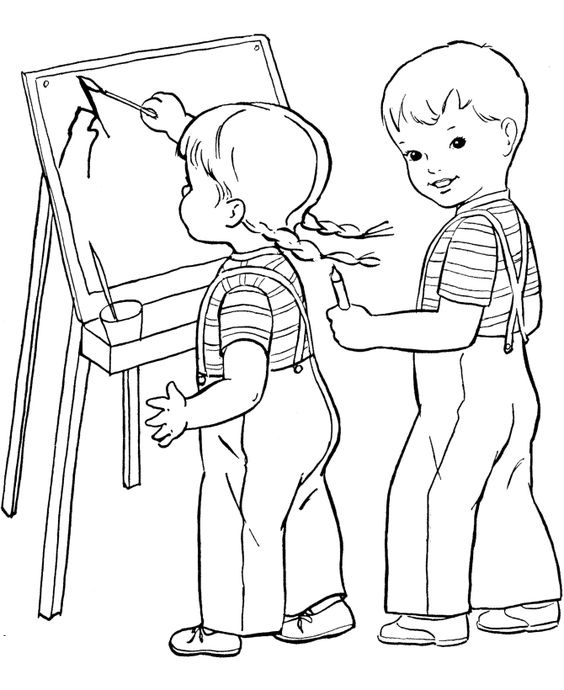
Contents
The Appeal of Coloring Books for Children
Coloring books flourish in their appeal to children because they encapsulate both visual delight and creative opportunity. To a child, a coloring book resembles an invitation a blank, uncharted territory waiting for their artistic input. The vibrant illustrations prompt them to engage in a world of creativity where they are in control. Think of it as a launchpad, a springboard into their artistic universe, fostering a sense of ownership over their creations. The freedom to pick colors, fill in patterns, and redefine characters breathes life into their simple black-and-white outlines, allowing for individual interpretation.
Moreover, the designs in these books cater to various age groups and interests. Whether they discover fantastical landscapes, beloved animal characters, or intricate geometric patterns, the ability to choose what to color connects them to their likes and hobbies. The excitement lies in the thousands of possibilities; a child can be a daring colorist one moment and a meticulous artist the next. Such diverse options not only keep them entertained but also stimulate cognitive engagement, as children weigh their choices on color combinations and how they apply them to their artwork.
Key Elements Influencing Appeal:
- Vibrant Illustrations: Captivating visual elements catch children’s attention.
- Creative Ownership: The ability to make independent artistic choices fosters a sense of empowerment.
- Diverse Themes: Multiple themes covering animals, fantasy, and characters cater to children’s interests.
- Cognitive Engagement: Coloring makes children think critically and imaginatively as they choose colors and decorate their pages.
In essence, coloring books stand as bridges between reality and imagination, offering children a sanctuary where they can be expressive, creative, and free from judgment as they fill their worlds with color.
Colorful Imagery and Engaging Designs
The world of coloring books is undeniably captivating, filled with colorful imagery and engaging designs that can spark joy in any child. Remarkably, children’s minds have a natural affinity for vibrant colors; these hues evoke emotion, draw attention, and inspire creativity. A coloring book offers an array of images ranging from simple shapes for younger children to intricate, elaborate patterns designed to capture the imagination of older kids. This variety ensures that no matter the age or artistic skill of a child, there exists a coloring experience tailored just for them.
Imagine a young child’s excitement as they flip through a coloring book filled with playful animals against fantastical landscapes, beckoning them into an imaginary realm. The opportunity to bring these illustrations to life through color is exhilarating. For a child, each page turned presents not merely a static image but rather a world awaiting transformation. This dynamic interaction compels children to engage deeply with their choices in ways many other forms of entertainment cannot match.
Furthermore, coloring serves as a wonderfully open-ended activity. When children express their artistic vision, they may choose to use bold primary colors, soft pastels, or a blend of hues there are no strict rules here. The process encourages creative thinking, as kids often experiment with colors uniquely, transforming their coloring pages into expressions of personal style. Art is often a reflection of emotions; consequently, the colors a child chooses can provide insight into how they feel or how they wish to feel.
Additionally, engaging designs can serve practical educational purposes. Many coloring books incorporate learning themes such as shapes, numbers, or letters, seamlessly blending creativity with cognitive development. When children are wrapped in a creative task while learning, they have fun and are more likely to retain the information being presented. Thus, colorful imagery, engaging designs, and educational elements all play crucial roles in inviting children to color.
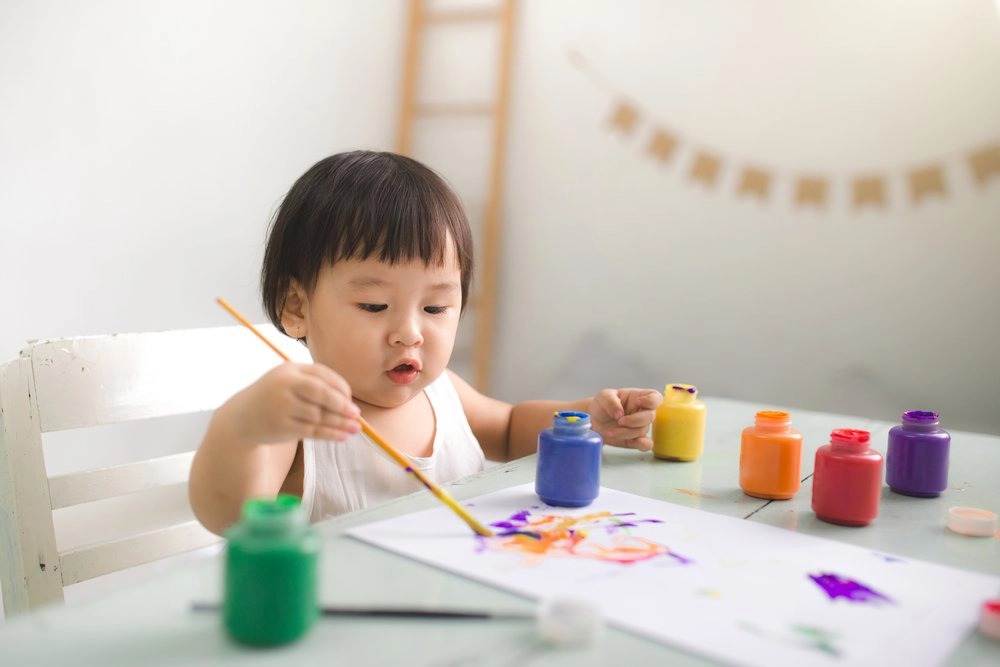
Familiarity with Characters and Themes
Children are naturally driven towards what they know and cherish, making the familiarity of characters and themes in coloring books incredibly appealing. When a beloved character from a show or story appears in a coloring book be it characters from Disney, classic fairy tales, or animated favorites like “Paw Patrol” or “Peppa Pig” it ignites a spark of enthusiasm. This emotional connection enhances their overall experience, as kids are not just coloring; they are bringing their cherished stories and characters to life. In a way, it’s like stepping inside their favorite film or series, further immersing them in the universe they adore.
Furthermore, the themes in coloring books can range broadly from fantastic worlds filled with unicorns and dragons to realistic scenes depicting various animals in nature. Not only do these themes resonate with children’s likes, but they also offer opportunities for imaginative play. When coloring pictures of astronauts in space or exploring vibrant underwater scenes, children can envision thrilling stories and adventures, prompting them to think beyond the page. This transformative experience of turning images into stories enriches their creativity, providing additional layers to the coloring activity.
Moreover, themed coloring books that integrate educational elements can serve as valuable teaching tools. Coloring books featuring animals can facilitate learning about wildlife and environmental awareness, while those focused on letters and numbers introduce foundational educational concepts. In this context, characters and themes work together to create not just engaging but also multifaceted learning experiences for children.
Overall, the blend of familiar characters and resonating themes in coloring books significantly boosts children’s enthusiasm for the activity, transforming coloring from a simple pastime into an enriching experience that nurtures imagination, emotional connection, and learning.
The Fun of Creative Expression
Coloring offers a uniquely fun avenue for children’s creative expression, allowing them to explore their artistic impulses freely. In a world where children are often guided by rules and expectations, coloring books provide a liberating experience where they can choose colors, patterns, and styles without limitations. The simple act of filling a space with color becomes a delightful exploration of individuality and creativity.
Every coloring session invites a child to become an artist, allowing a window into their consciousness. They can illustrate their interpretation of a sunny day, portray characters in their vibrant world, or even depict emotions through color choices. This freedom fosters creative thinking as children learn that their interpretations of images can vary widely from their peers. Just as a flower garden thrives in variety, so too does artistic expression, and there is beauty in each child’s unique take on the same image.
Moreover, this creative outlet not only nurtures artistic skills but also enhances various cognitive abilities. When children make decisions about color combinations or how to fill spaces, they engage in critical thinking and problem-solving. This exercise can improve their ability to evaluate options, consider impacts, and make informed choices, skills that are vital throughout life. If a child decides to blend blue and yellow to create green while coloring a tree, they are not just experimenting with color; they are undertaking a small journey across the spectrum of creativity and logic.
Additionally, the act of coloring can serve as a form of emotional regulation. For many children, engaging in creative activities becomes a pathway for expressing and processing feelings. Whether they are feeling joyful, frustrated, or curious, coloring allows them to externalize their emotions onto paper, translating abstract feelings into a tangible medium. The relatability of this process can be therapeutic, offering comfort and even healing properties that promote emotional well-being.
In essence, the fun of creative expression through coloring extends beyond just entertainment. It enriches children’s lives by encouraging individuality, critical thinking, emotional exploration, and artistic exploration all vital components for holistic development.
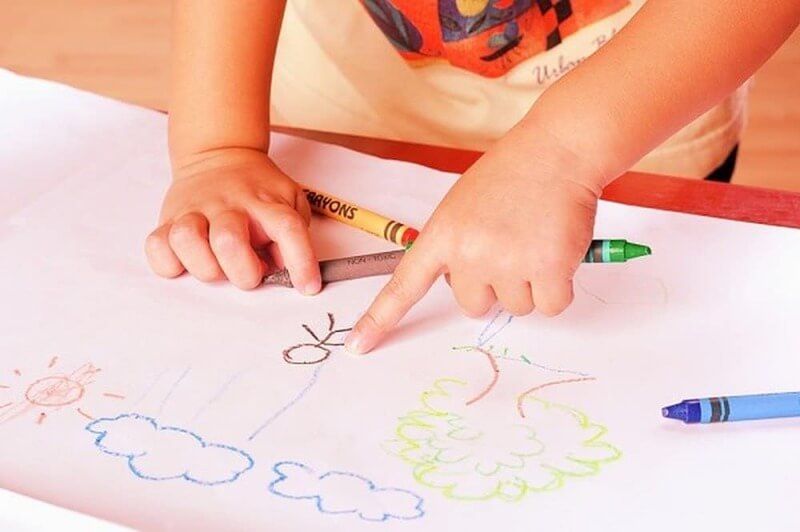
Developmental Benefits of Coloring
While coloring is often perceived as a simple pastime, it offers an array of developmental benefits crucial to children’s growth. The combination of creative fun and educational opportunities is powerful, making coloring books a valuable tool for learning and development.
- Enhancement of Fine Motor Skills: Engaging with coloring books requires children to grip crayons or markers, developing fine motor skills foundational for other activities, such as writing or using utensils.
- Improvement of Hand-Eye Coordination: As children color, they learn to control their hand movements in sync with their visual expectations, aiding the development of hand-eye coordination.
- Cognitive Engagement: Coloring requires concentration, decision-making, and the ability to visualize outcomes, further honing cognitive skills.
- Emotional Regulation: The act of choosing colors and patterns creates a soothing process that can help children manage their emotions effectively.
Through these developmental aspects, coloring supports holistic growth in a fun and engaging manner.
Enhancement of Fine Motor Skills
One of the standout developmental benefits of coloring is the enhancement of fine motor skills. As children manipulate crayons, markers, or colored pencils, they engage in critical activities that build dexterity and hand strength. The different grips required to hold various coloring tools cultivate the necessary muscle coordination needed for more complex tasks, such as writing.
Key Benefits of Fine Motor Skill Development through Coloring:
- Grip Strength: Children learn to wield coloring tools with varying strengths, supporting the development of essential grip that translates to better handwriting and control over other tools.
- Precision and Control: Staying within lines and filling in small spaces necessitates focused hand movements, which transfer over to future skills like handwriting or playing musical instruments.
- Independence in Daily Tasks: Enhanced fine motor skills make it easier for children to manage daily tasks such as buttoning clothes, tying shoelaces, or using scissors all contributing to their sense of independence and competence.
Studies have shown that participation in activities like coloring can lead to significant improvements in fine motor skills. For example, children who engage regularly in coloring activities often display improved dexterity and grip strength compared to their peers who do not participate as frequently.
In summary, engaging in coloring is an essential and enjoyable way for children to develop their fine motor skills, laying the groundwork for future academic and daily living tasks.
Improvement of Hand-Eye Coordination
Another critical developmental benefit associated with coloring is the enhancement of hand-eye coordination. This skill is crucial not just for artistic pursuits but for a myriad of daily activities, including writing, playing sports, and even engaging in self-care tasks.
How Coloring Enhances Hand-Eye Coordination:
- Visual Tracking: While coloring, children learn to visually track the lines of the drawing and move their hands accordingly. This simultaneous action helps cultivate visual-motor integration, a fundamental skill necessary for many activities.
- Controlled Movements: Effective hand-eye coordination requires precise control of motor movements. Staying within lines or applying colors uniformly forces children to align their visual observations with the correct hand actions.
- Complex Tasks: As children’s skills progress, they can tackle more intricate designs that challenge their coordination further, continually improving the connection between visual input and motor response.
Research indicates that engaging in coloring activities can help foster stronger hand-eye coordination in children. The blending of motor skills with visual tracking through coloring Activity encourages practice and improvement of this vital skill.
Through creative endeavors like coloring, children refine their hand-eye coordination, contributing to their overall developmental trajectory.
Boosting Creativity and Imagination
Coloring is not merely a recreational pastime, but a powerful catalyst for boosting creativity and imagination in children. By offering a platform for artistic expression, coloring books inspire children to explore their thoughts, ideas, and unique perspectives.
- Creative Freedom: Children are encouraged to choose colors, patterns, and styles, providing a sense of independence over their artistic expression. This freedom fosters individual creativity, allowing children to create their masterpieces.
- Imaginative Play: As children color, their imaginations run wild. They envision scenarios related to the characters they are coloring, prompting storytelling and exploration of new ideas.
- Problem-Solving: When faced with deciding on colors or how to fill spaces, children engage in problem-solving skills essential for cognitive growth.
Furthermore, coloring serves as a mindful exercise, grounding children in the moment and encouraging them to be present. This mental engagement promotes relaxation and provides a therapeutic outlet for creativity.
In essence, the profound impact of coloring enhances not just artistic skills but also promotes creativity and imaginative thinking, preparing children for lifelong learning and exploration.
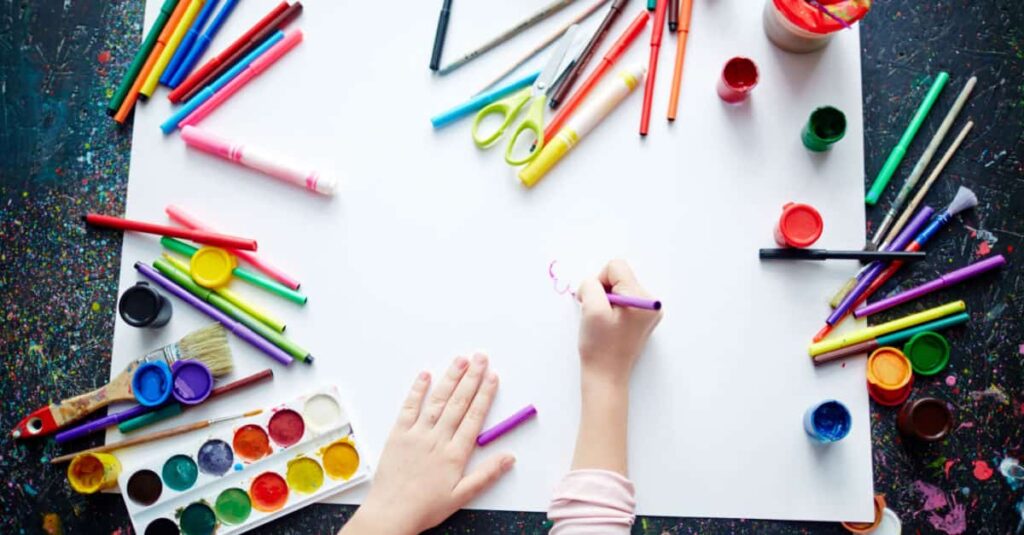
Emotional and Mental Health Benefits
Coloring activities extend beyond creative expression, offering significant emotional and mental health benefits critical for children’s overall well-being. In an era where screens and fast-paced living dominate, the simplicity of coloring can serve as a mindful retreat.
- Stress Relief: Engaging in coloring provides children with a calming outlet. The repetitive movements of coloring can have a meditative effect, allowing them to focus on the activity rather than external stressors.
- Emotional Expression: Coloring can serve as a visual means of expressing emotions. Children may find it easier to convey feelings they struggle to articulate verbally through their artwork.
- Boosting Mood: Creative activities like coloring can boost mood and self-esteem. As children engage in creating something beautiful, they experience a lift in their emotional state, contributing positively to their mental health.
Incorporating coloring into children’s routines can profoundly influence their emotional regulation and mental health.
Stress Relief and Relaxation
Amid the distractions and demands of everyday life, coloring provides a sanctuary for stress relief and relaxation, particularly for children. The rhythm of colorful strokes and the process of creation pull children into a calm and focused state, promoting emotional well-being.
Mechanisms of Stress Relief through Coloring:
- Mindfulness Practice: Coloring is inherently a mindful activity, encouraging children to focus on the present moment. This practice can help temper feelings of anxiety, providing a break from worrisome thoughts.
- Repetitive Motion: The repetitive nature of coloring can evoke a sense of calm. For many children, the familiarity of selecting colors and filling in designs creates a soothing routine that alleviates stress.
- Control over Environment: Coloring lets children exercise control over their artistic choices, giving them a sense of agency that can be reassuring, especially in a world often marked by unpredictability.
Research has shown that engaging in creative activities can lead to lower anxiety levels and improved mood states in both children and adults.
By providing a structured outlet for creative expression, coloring enhances children’s emotional resilience amid their daily challenges and uncertainties.
Encouraging Self-Expression
Coloring fosters an environment rich in self-expression, offering children a platform to communicate their emotions and perspectives uniquely. This artistic freedom allows them to experiment with different colors, styles, and interpretations, promoting individuality and creativity.
- A Safe Space: Coloring offers a non-judgmental space for children where self-expression thrives. They can translate feelings be it happiness, sadness, or fear onto the page without the constraints of spoken language.
- Identity Development: As children choose colors and create artwork that reflects who they are, they embark on a journey of identity exploration. This process contributes significantly to their self-esteem and confidence.
- Creative Decision-Making: The choice in colors and shapes cultivates critical thinking and decision-making skills. By determining how to express their thoughts, children enhance their ability to navigate choices in other areas of life.
Overall, through coloring, children are empowered to explore and articulate their identities while developing skills that are integral to their growth and emotional intelligence.
Building Confidence and Sense of Accomplishment
Coloring is more than just an enjoyable activity; it also builds children’s confidence and instills a profound sense of accomplishment. Completing a coloring project can provide a boost in self-esteem and reinforce their abilities.
- Tangible Results: As children complete their coloring pages, they witness the physical manifestation of their creativity a visual reflection of their efforts. This sense of achievement can be immensely satisfying.
- Reinforcement of Abilities: Positive reinforcement gained from creating something beautiful encourages children to pursue further artistic endeavors. As their confidence grows with each completed project, they become more willing to tackle new challenges.
- Patience and Perseverance: The process of coloring teaches children the value of patience and perseverance. Completing a detailed page requires dedication and focus, instilling a sense of pride in their work.
With every stroke and color choice, children learn about their capabilities, nurturing resilience that can translate into other life areas.
Social Aspects of Coloring
Coloring is inherently social; it creates opportunities for children to bond and develop essential social skills. Engaging in group coloring activities nurtures creativity while promoting interpersonal relationships among children, parents, and educators.
- Opportunities for Collaborative Activities: Group coloring sessions encourage sharing, communication, and joint decision-making skills important for teamwork.
- Building Friendships: When children come together to color, they share in the joy of creativity, forming friendships and building social connections through shared experiences.
- Language Development: Collaborating with peers provides children with opportunities to practice language skills. Discussing their artwork can enhance vocabulary and strengthen communication abilities.
Through shared experiences and collaborative coloring activities, children not only enrich their artistic expressions but also enhance their social skills, fostering a sense of community.
Opportunities for Collaborative Activities
The social advantages of coloring extend to collaborative activities, where children can engage in shared creative tasks. By coloring together, they develop essential teamwork and communication skills while enjoying the creative process.
- Structured Group Activities: Organizing group coloring sessions, whether in classrooms or at home, encourages children to collaborate on shared projects. This provides an opportunity for them to express ideas collectively, negotiating decisions like color choices and design elements.
- Developing Communication Skills: Discussing their projects while collaborating helps children articulate their thoughts and ideas. Art becomes a language through which they can share insights and perspectives, promoting verbal communication.
- Creating a Sense of Belonging: Participating in group coloring activities cultivates friendships and increases feelings of belonging among peers. Sharing the creative process creates memories that enhance social bonds.
Through these collaborative experiences, children learn to navigate group dynamics positively, establishing friendships and social skills that will benefit them throughout their lives.

Sharing and Bonding through Coloring
Coloring can serve as a powerful bonding experience for children, parents, and educators alike. Shared moments spent coloring together cultivate connections and nurture relationships while fostering creativity.
- Family Interaction: Colorful family bonding sessions allow parents and children to engage meaningfully. As they share stories about the characters they are coloring, open conversations can naturally arise, deepening the parent-child relationship.
- Encouraging Positive Social Skills: When children interact with others during coloring activities, they learn how to share materials, take turns, and express themselves. This enhances their social engagement and strengthens their ability to connect with others.
- Creating Lasting Memories: Collaborative coloring projects create cherished memories for children and their families. The act of creating together reinforces emotional ties, establishing strong relationships based on shared experiences.
Thus, through the simple yet profound act of coloring, bonds are formed, nurtured, and celebrated, leaving a lasting impact on children’s social development.
The Role of Parents and Educators
Parents and educators play a pivotal role in nurturing children’s artistic exploration, offering support and resources that fuel creativity. By providing the right environment and encouragement, they can significantly enhance children’s engagement with coloring activities.
- Encouraging Artistic Exploration: Adults can foster creativity by supplying a range of materials, from crayons and colored pencils to various coloring books. They can also demonstrate enthusiasm for artistic endeavors to inspire children to engage in and explore their creativity further.
- Creating a Dedicated Space: Establishing a safe and designated art area stocked with tools and supplies allows children to explore creatively at their own pace, leading to independent artistic development.
- Participating Alongside Children: In joining children in coloring activities, parents and educators also model engagement. This collaborative approach reinforces the importance of creativity and expression.
By taking active roles in encouraging artistic exploration, parents and educators can foster an environment that stimulates children’s creativity, self-expression, and overall growth.
Encouraging Artistic Exploration
To support children’s artistic development, parents and educators can adopt various approaches that cultivate a love for creativity and exploration.
- Providing Diverse Resources: Access to a variety of art materials such as markers, crayons, paints, and different types of coloring books can ignite children’s curiosity and enthusiasm for artistic endeavors.
- Incorporating Art into Daily Routines: Integrating art activities into everyday routines can elevate children’s engagement and creativity. Whether it’s a quick doodle session on a rainy day or themed coloring nights, incorporating daily creative activities creates consistently positive experiences.
- Facilitating Open-Ended Projects: Instead of focusing solely on completed works, parents can encourage children to express their thoughts freely. Encouraging them to draw without restrictions fosters an environment where exploration becomes the primary focus.
By collaborating with children to explore artistic opportunities, their imaginative journeys are expanded, benefiting their emotional and cognitive development.
Selecting Appropriate Coloring Books
Choosing the right coloring book is crucial in maximizing engagement and creativity for children. Themed books that resonate with their interests can significantly enhance the coloring experience.
- Age-Appropriate Content: Selecting coloring books suited to children’s age and skill level is essential. Younger children may prefer simple designs, while older kids might enjoy more intricate patterns that challenge their skills and engage their imaginations.
- Appealing Themes: Choosing books featuring beloved characters or popular themes like animals, outer space, or fantasy worlds can increase motivation and engagement, allowing children to connect their interests with creativity.
- Encouraging Interaction: Selecting coloring books that allow for interactivity such as integrating additional drawing prompts can enrich the experience, inviting children to expand beyond mere coloring and into creative storytelling.
By carefully considering the content and themes of coloring books, parents and educators can create opportunities for richer engagement and artistic exploration.
Integrating Coloring into Learning Experiences
Coloring can seamlessly integrate into educational experiences, serving as a versatile tool that benefits various aspects of children’s development.
- Enhancing Cognitive Skills: Addressing educational themes in coloring activities like shapes, numbers, or letters can foster cognitive engagement while reinforcing foundational learning concepts.
- Promoting Emotional Development: When integrated into lessons, coloring reinforces emotional expression and communication. Creating art in response to learning concepts helps children articulate their thoughts and connect emotionally with the content.
- Encouraging Collaboration: Group coloring projects can facilitate teamwork and communication. As children color together, they learn to share ideas, negotiate, and work collaboratively on joint tasks.
By incorporating coloring into diverse learning experiences, parents and educators can create an engaging, multi-faceted approach to education that enriches children’s growth and enjoyment.
In conclusion, the allure of coloring books for children stems from their colorful imagery, engaging designs, and the emotional, cognitive, and social benefits they offer. By fostering creativity, encouraging self-expression, and enhancing developmental skills, coloring books serve as invaluable tools in children’s growth and development. Parents and educators can play a pivotal role in this journey by providing the right resources, creating a supportive environment, and actively engaging with children in their artistic endeavors. Ultimately, the joy of coloring extends far beyond the page, leaving a lasting impact on children’s lives and contributing to their overall well-being.

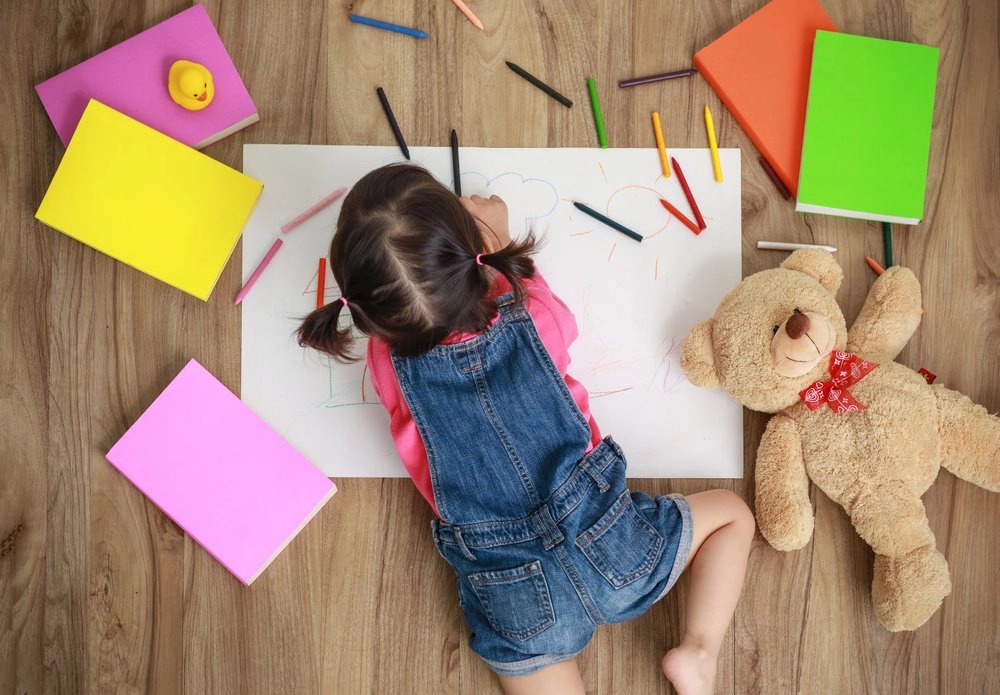



![Spookyween Review - Engaging Video Products for Kids with PLR Opportunities [- $2997 Bonus Here] Spookyween Review](https://pthoreview.com/wp-content/uploads/2024/09/Spookyween-Review-90x90.jpg)

![Firestarter AI Review: Micro-Adventure Builder | Unleash Creative Storytelling [- $2997 Bonus Here] Firestarter AI Micro Adventure Builder Review](https://pthoreview.com/wp-content/uploads/2024/09/Firestarter-AI-Micro-Adventure-Builder-Review-90x90.jpg)



